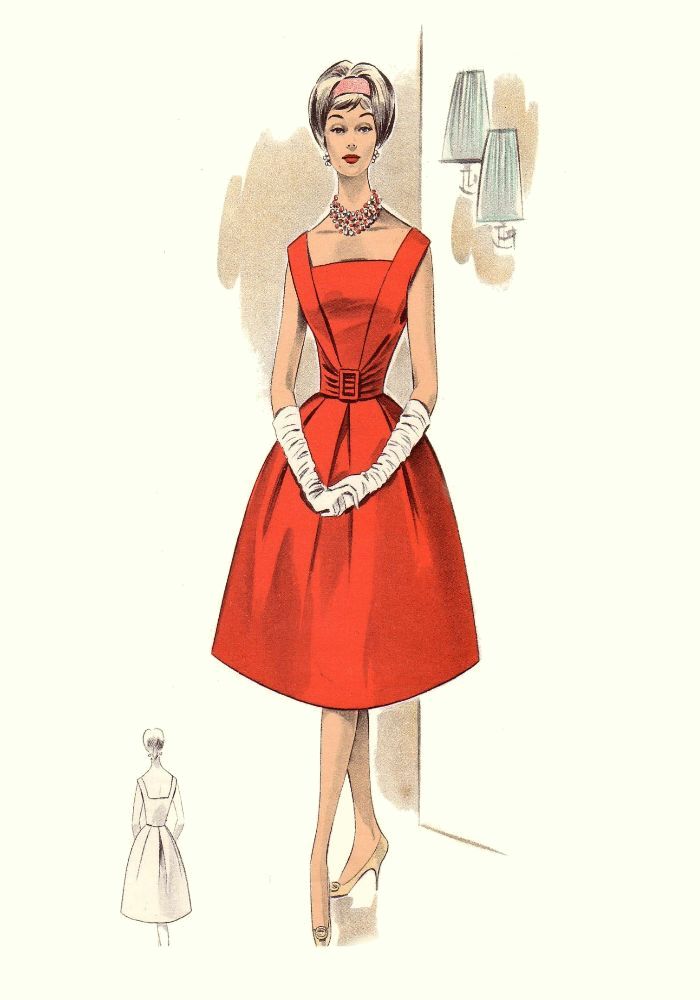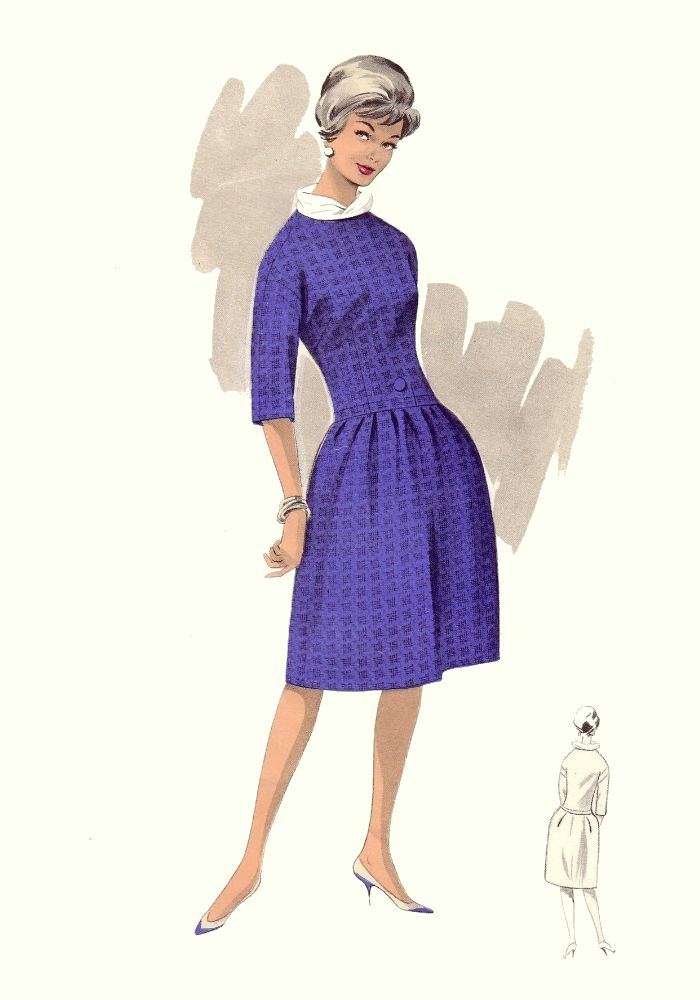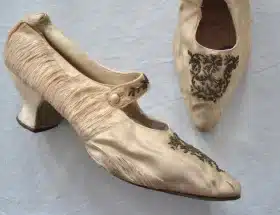By Pauline Weston Thomas for Fashion-Era.com
1960s Fashion History - Costume History Drawings c1962 - 1966
This page has a mixture of style elements evident in female clothing between 1962-1966. As with all fashion eras there was overlap of the styles of several years and not everyone immediately wore the mini or even shorter above knee skirts.
Clothing silhouette lines were getting more relaxed with soft over bloused tops becoming an alternative to form fitting slim sheath clothes. Pencil tight clothing gave way to simply straight-cut or A-line cut dresses.
Bodices were often still fitted, but semi-fitted and easier yoked styles were a feature of 1960s fashions. The more relaxed silhouettes meant many younger women began to change the type of underwear they wore. Younger women often abandoned corselettes in favour of softer roll-ons. Hair was still elaborate for many women even though more modern styles emerged. Few women could manage without hair spray, hair rollers and heated rollers.
C20th Fashion History Images c1962 - 1965
The full skirt a leftover from the 1950s, was seen well into the mid-1960s. It was soon ousted by the newer more modern-looking A-line dresses.
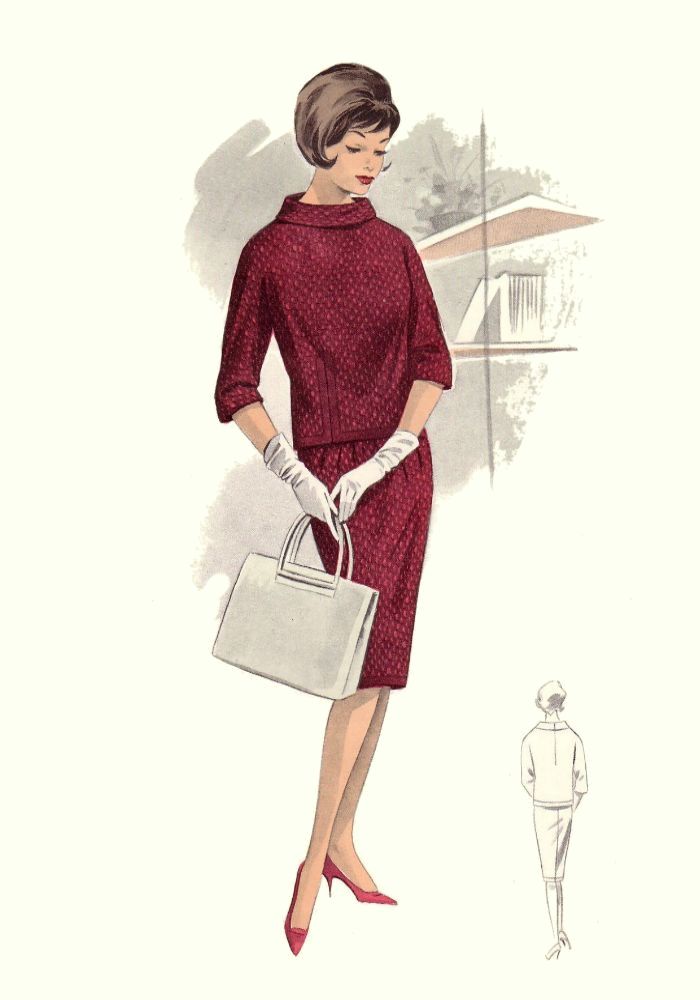

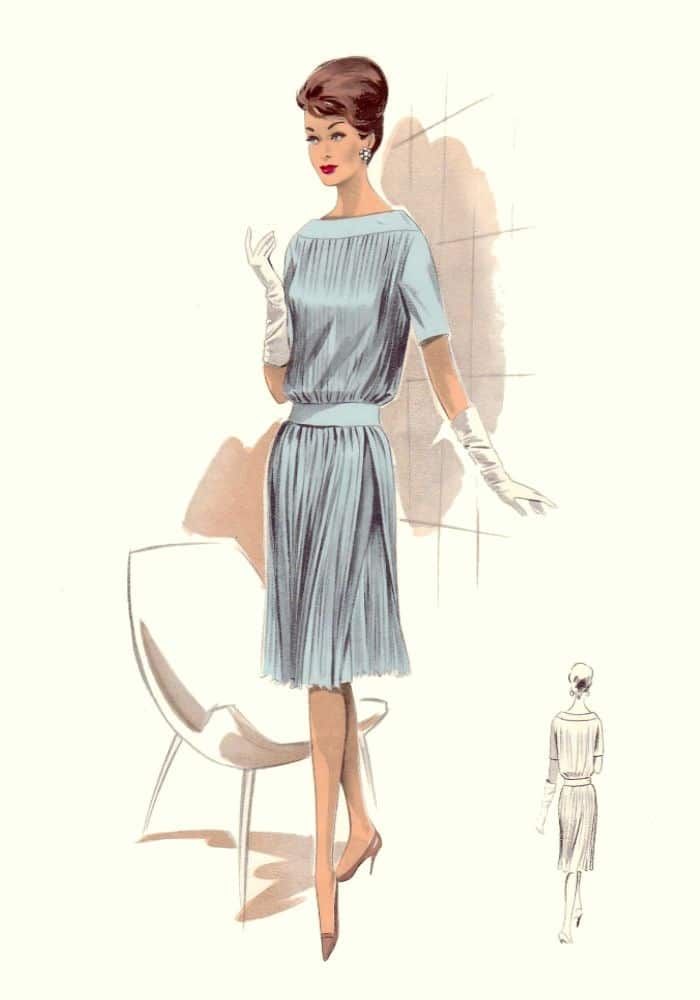
These styles show how more relaxed styles such as dropped waists had become fashionable since about 1961. The three quarter sleeve disappeared as a fashion sleeve by the mid 1960s. With time it was replaced by short sleeves, long sleeves and sleeveless quite cutaway and halter armholes.
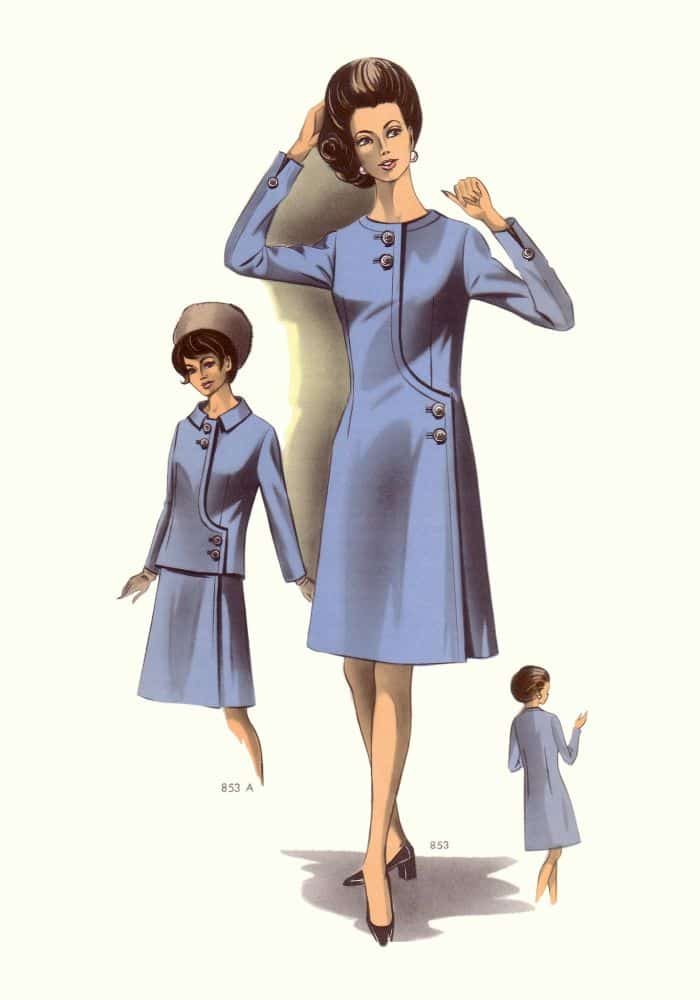
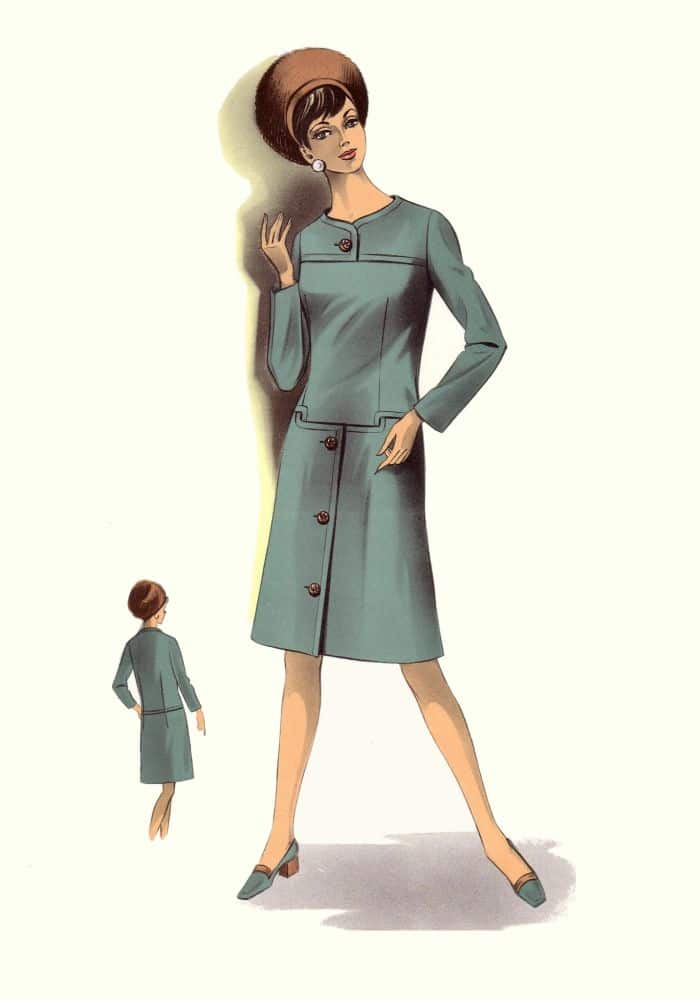
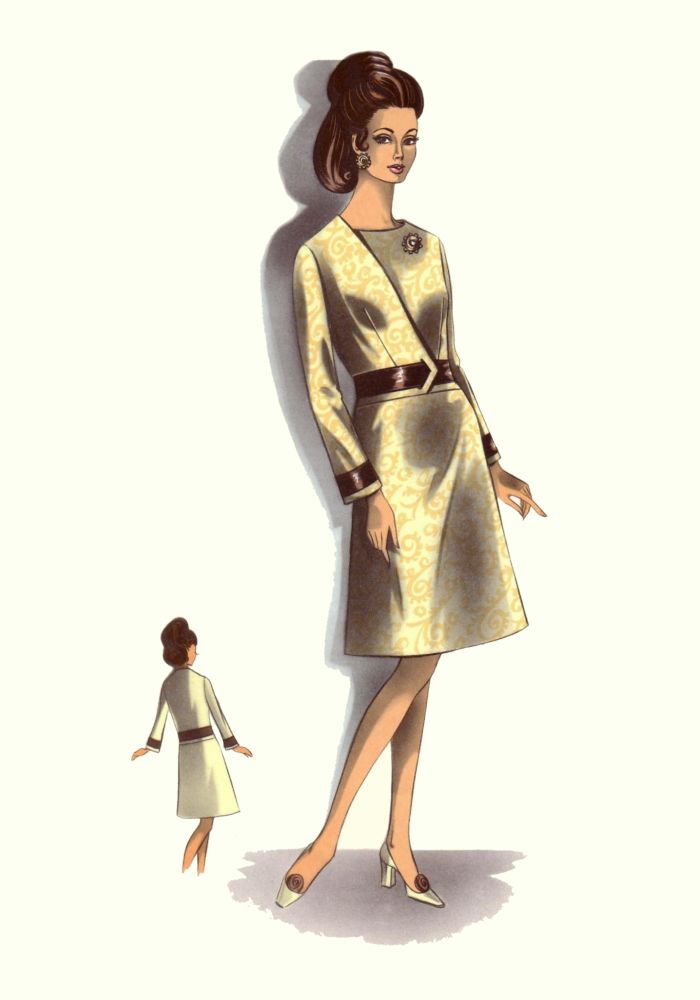
A-line styles were more relaxed and easier to wear than straighter fashions. As the sixties progressed the A-line was a more obvious choice to shorten than the straight dress. Wonderful coiled-up do hairstyles are a feature of the era.
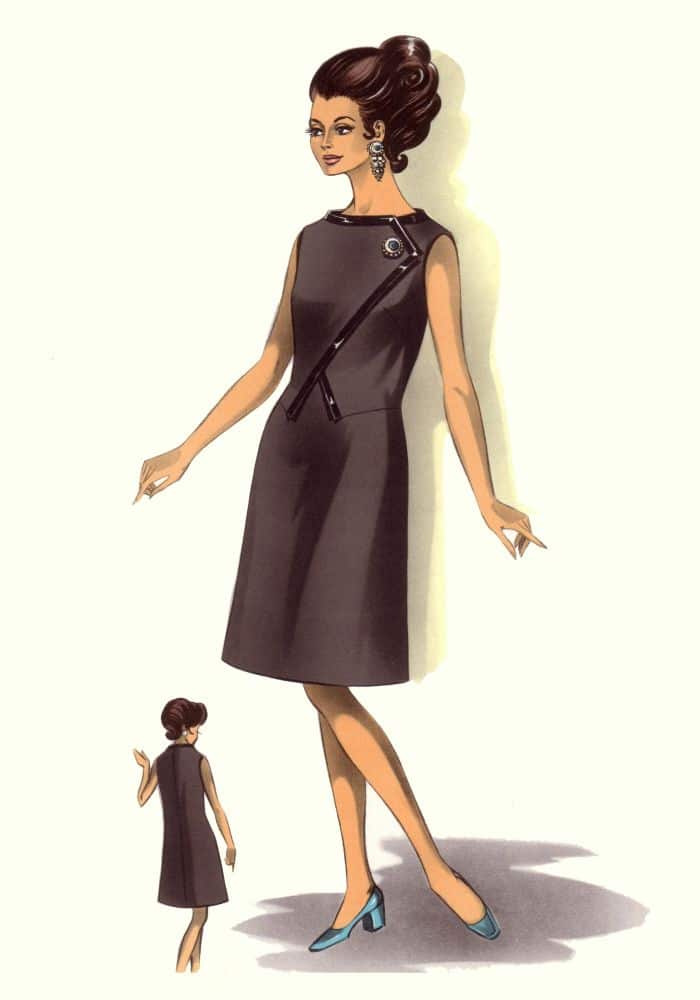
The Early 60s Silhouette - 1962
1960s Fashion History can be traced very accurately by looking at old sewing patterns. These illustrations were some I had torn from an old sewing pattern book, decades ago and kept as reference.
1962 was scribbled on the original pages and they are so typical of early 1960s clothes.
These images are ideal for colouring in.
Or use them as inspiration for fashion designing and pattern cutting with the early 1960s feel.
Those unschooled in 1960s fashion history often wrongly assume that all 1960s fashion was extremely short. The mini skirt length was not really a mass fashion until the mid-1960s. Skirt lengths had gradually become shorter at the end of the 1950s.
By the early sixties skirt lengths were as you can see just on, or just skimming the knee. Many people think that this is the perfect length for a dress as any style that ends on a body joint has a natural look that helps the body seems well-balanced.
Slim line sheath or tubular dresses gave way to flared skirts. Here you can see the tentative beginning of the A line skirt, that, in its many varying lengths, from maxi to mini, would remain popular for about 15 years until 1979. The image of the clothes the two girls wear are quite innovative for the time frame. They marry two eras.
The little girl wearing the full dress looks like her dress could have sat happily in the 1950s, whilst the coat has an early Jackie Kennedy feel to it. That coat style looks much like styles of coats worn by adults after 1964.
1962 Fashion Colouring In Line Drawings
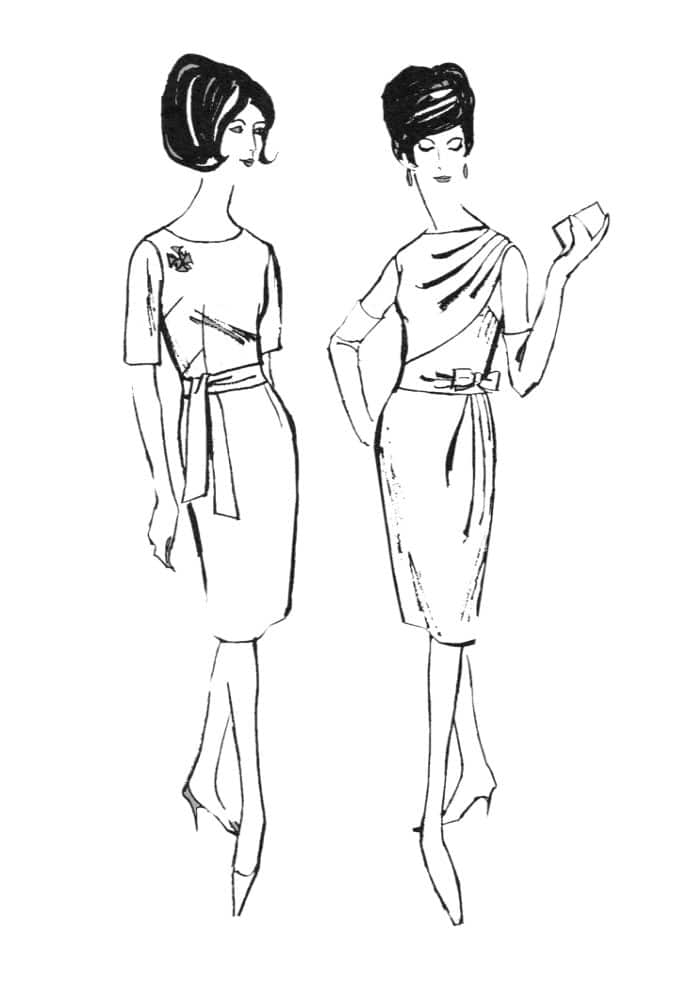
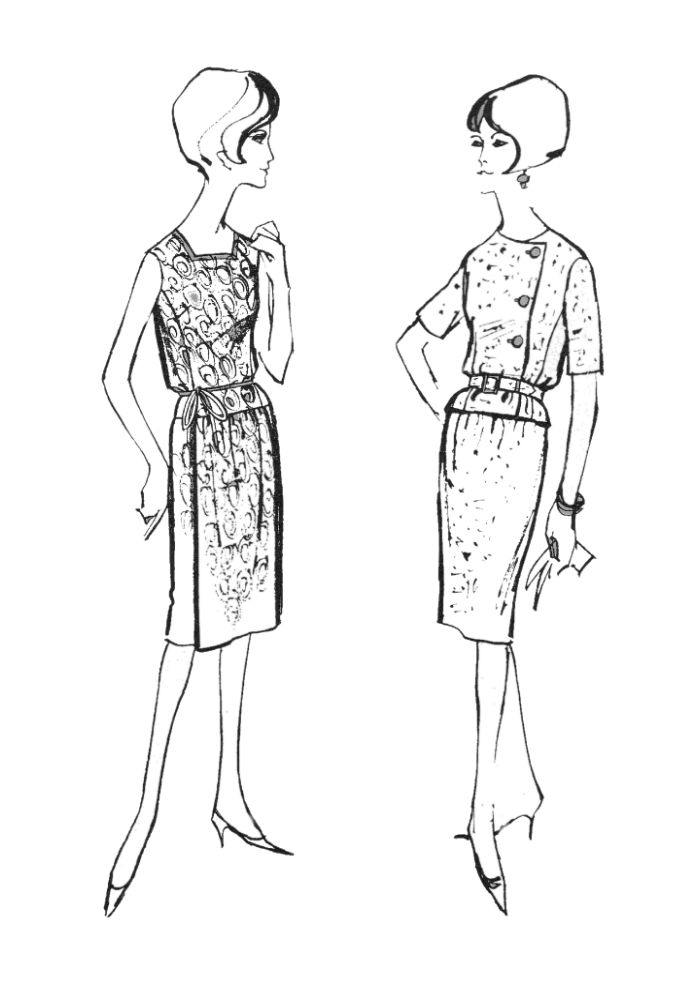
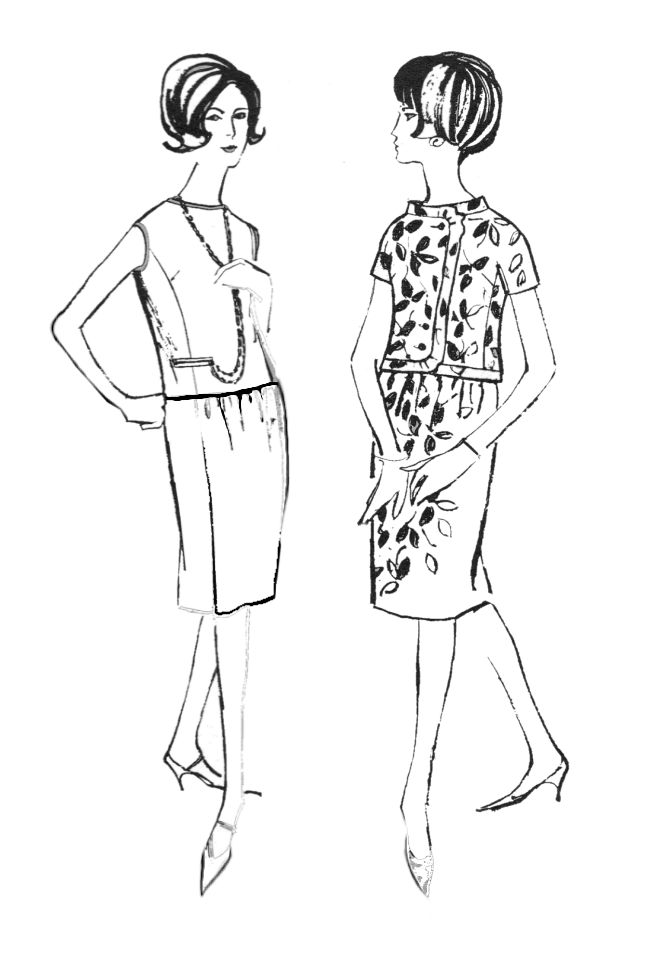
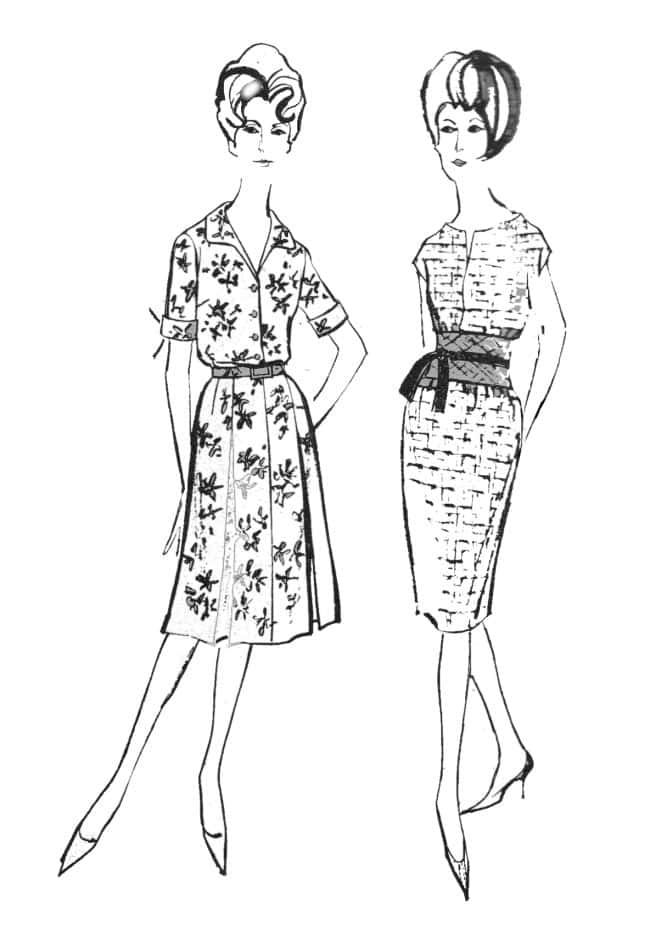
1962 - Slimline sheath, Empire line dresses, overblouse styles of the early 1960s. Jewellery brooches and decorative buttons were used to highlight the elegance of a dress or jacket.
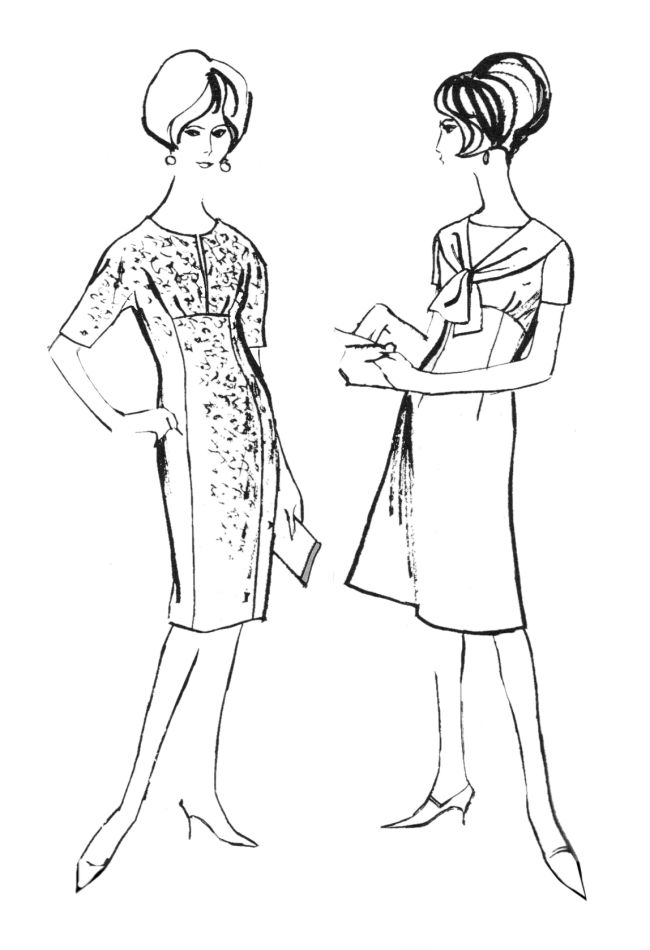
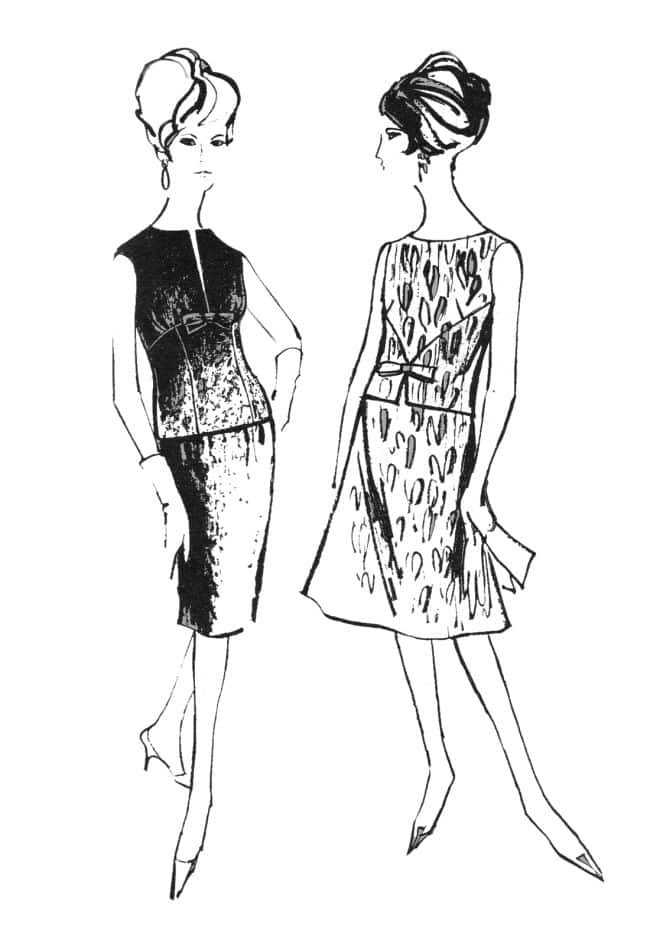
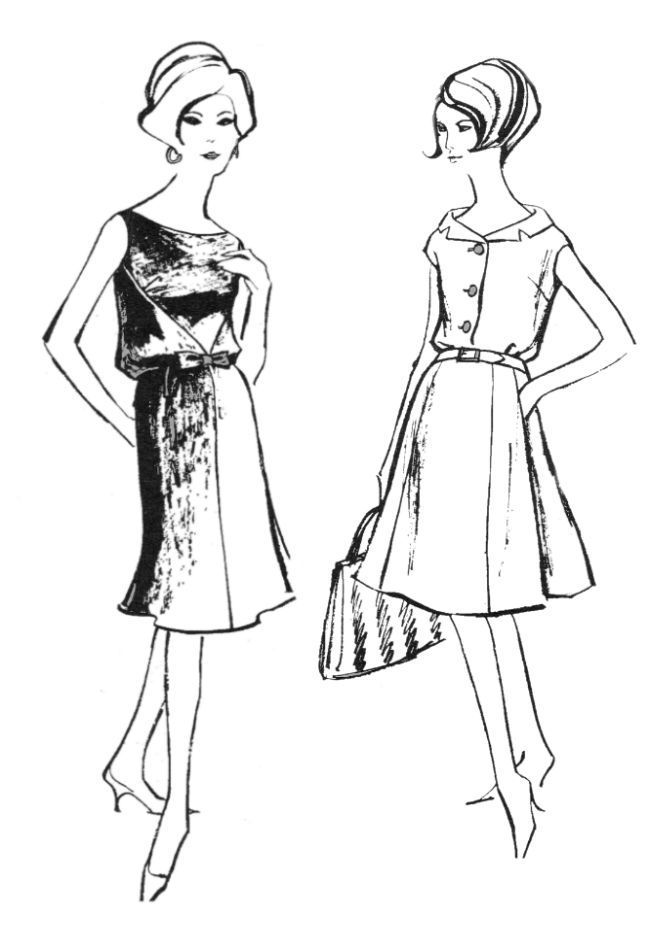
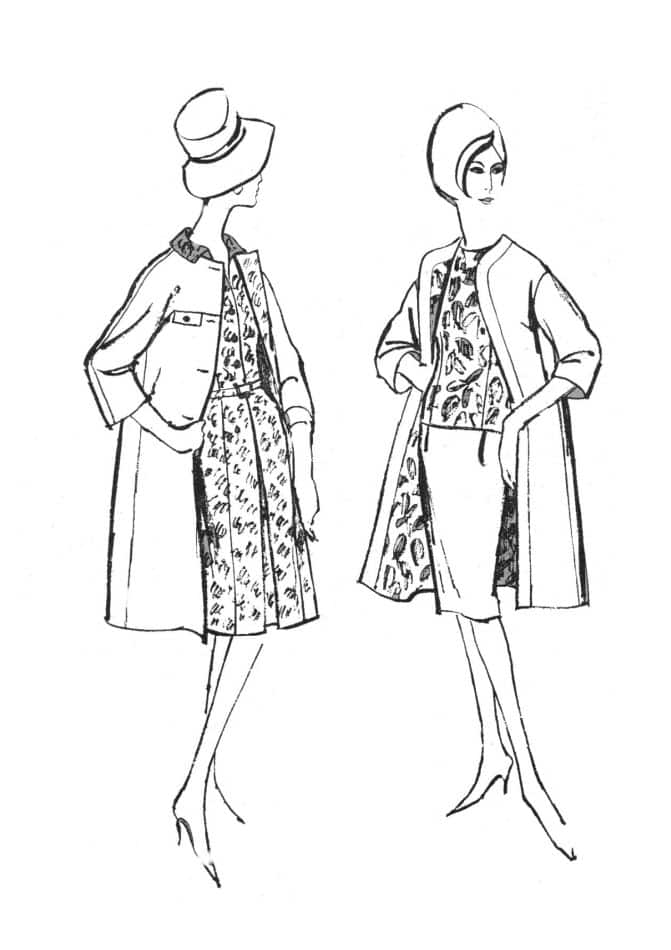
1962 Dresses were worn with contrast edge to edge duster coats. Semi fitted dresses with wide set necklines were a feature of 1960s clothes, as were two-piece outfits of overblouse and skirts of several styles, including pleated skirts on a hip Basque.
The overblouses were often straight, but could also be similar to fitted scoop neck shell tops of the 1990s.
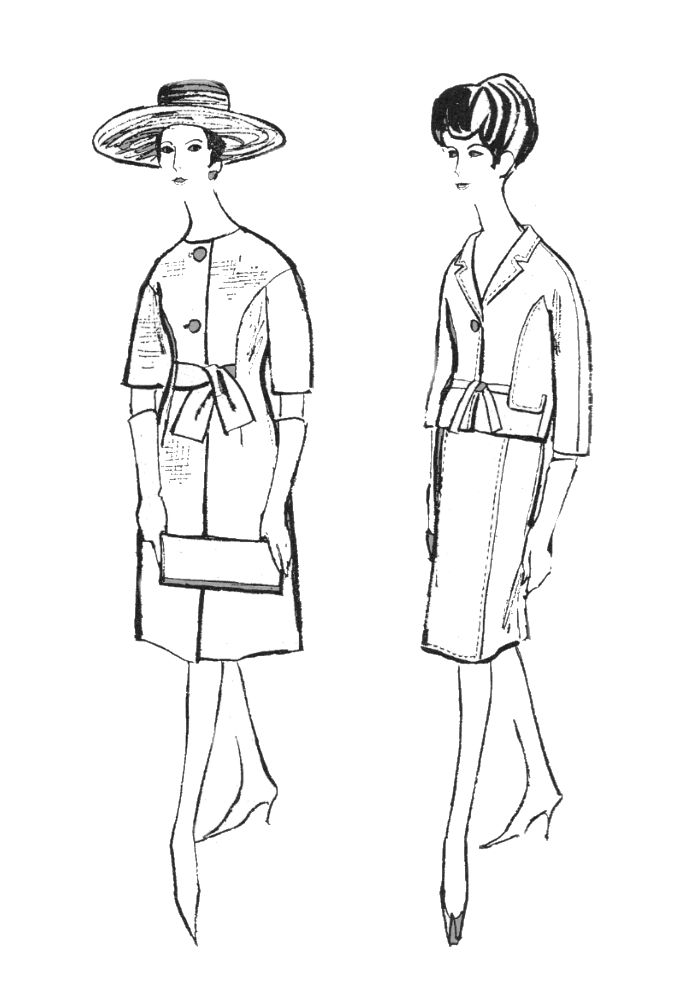
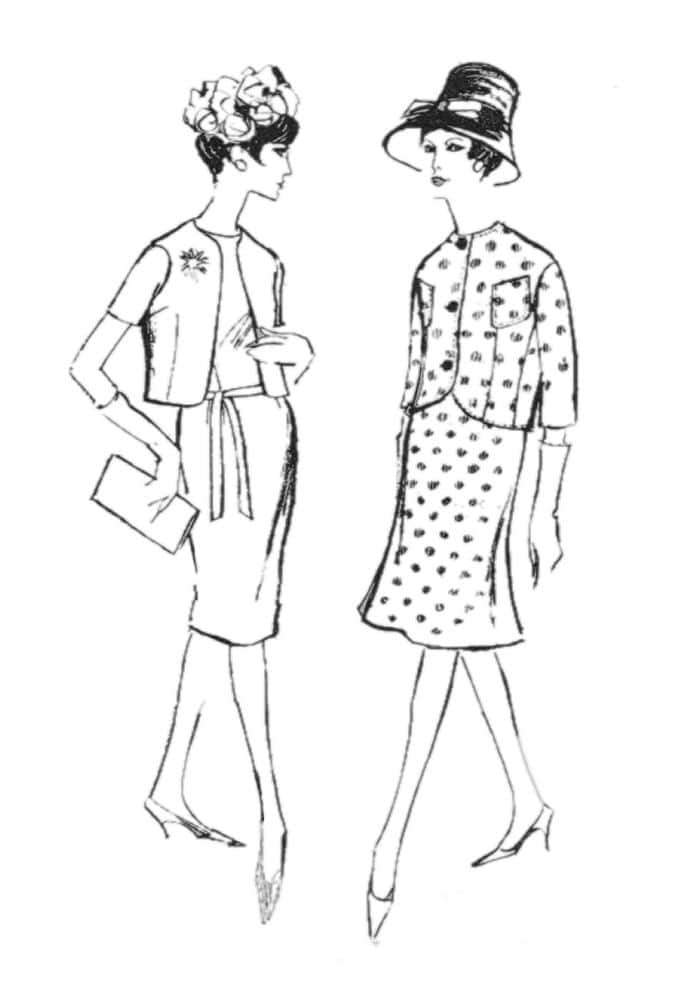
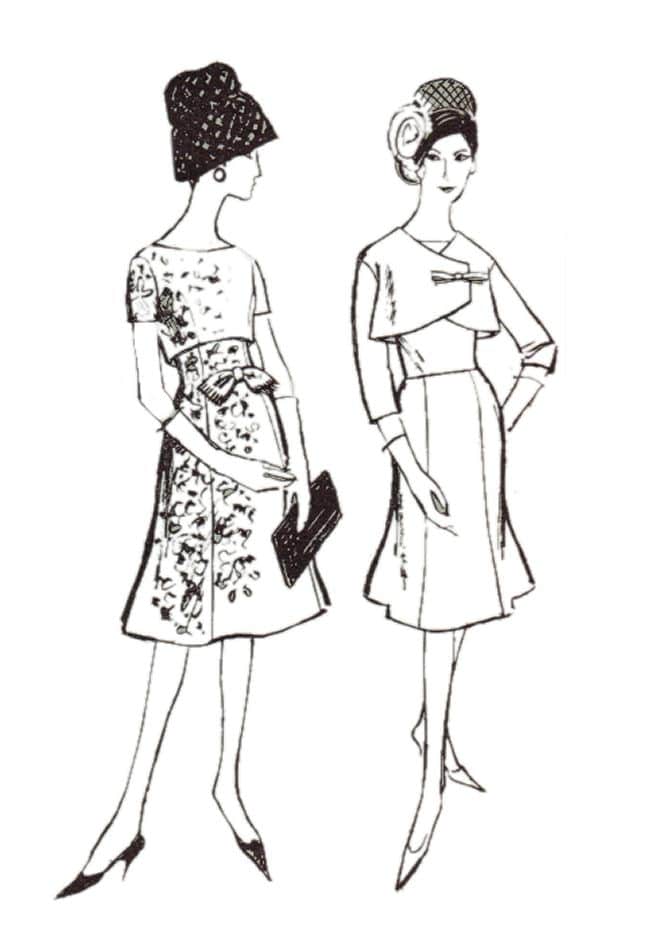
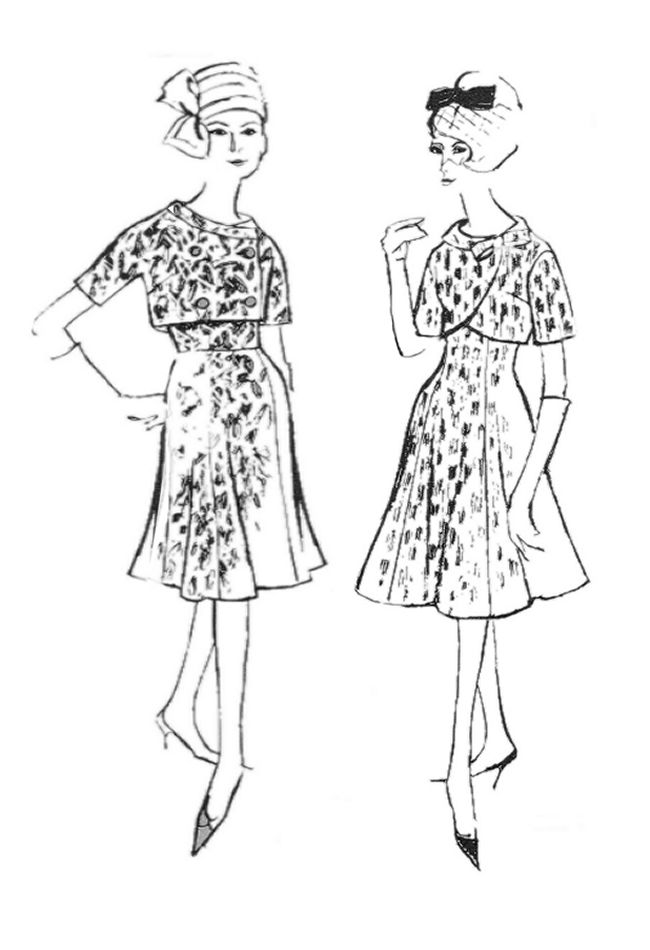
Princess seamlined clothes gradually introduced more volume into skirts without gathering at the waist. Often they were teamed with empire line short bolero jackets.
Note the little brooches, clutch bags, hats and gloves. Hairstyles were still full, but sleeker, with flick ups a new feature that with variations remained in fashion for many years.
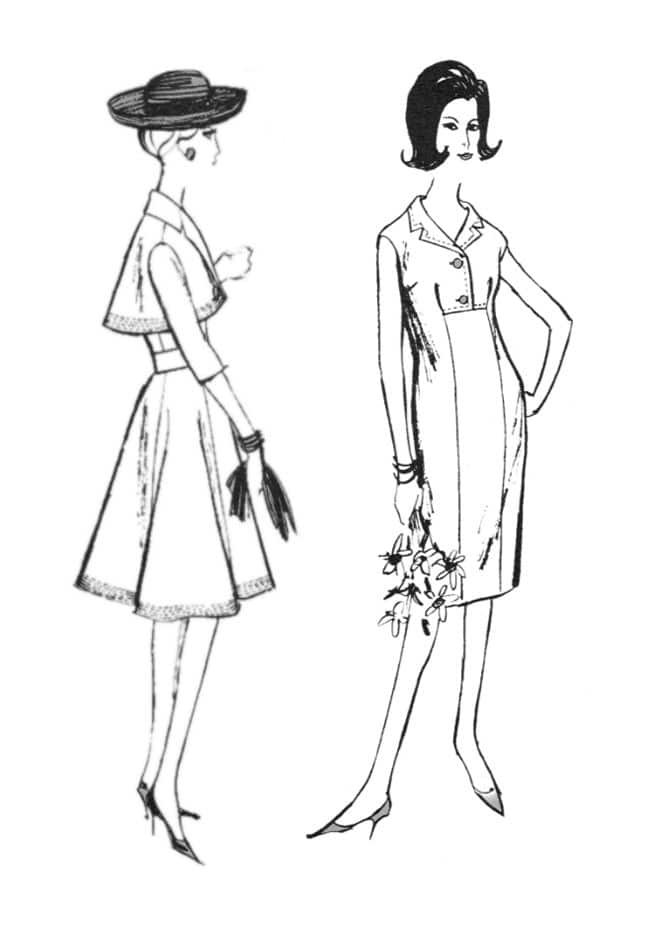
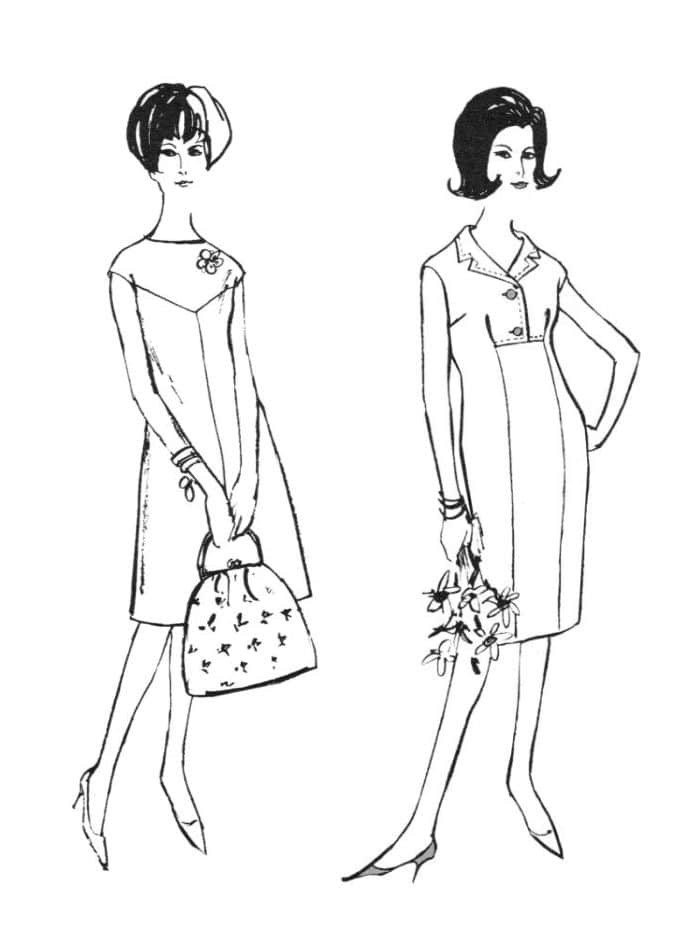

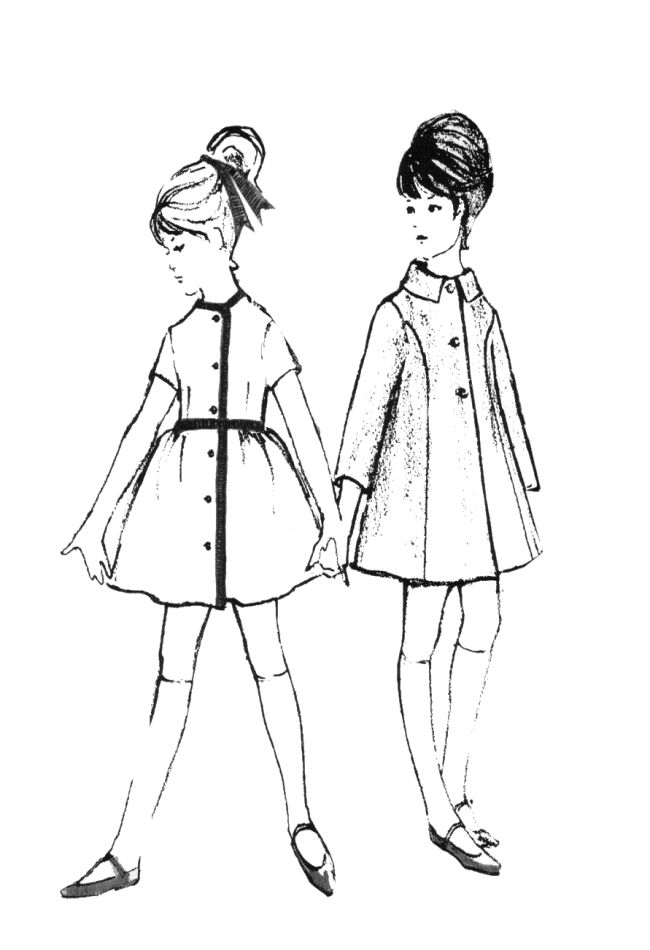
Popular coat styles included loose duster and swagger coats. Later Princess line coats were just as popular. When focus was away from the waist it was often on the bustline as an empire bodice seam or a seamed yoke line.
Children's clothes had much shorter skirts and soon adult clothing followed 'childlike' pubescent styles.
Fashion Sewing in the 1960s
Fashion sewing was very popular during the early sixties and was a major subject in secondary modern schools in the UK. There, female pupils often had two half-day sessions of dressmaking and needlecraft a week.
Most young girls with a secondary modern education in UK left school at 15 with good craft sewing skills. Many were easily able to make dresses that fitted closely to the body and had fully lined bodices or slips.
Those who went to Grammar Schools were less fortunate in acquiring textile arts mastery. They usually had to choose between Art, Domestic Science (Cookery) or perhaps Geography or Housecraft by their third year in school. So for most girls by the time they chose a selection of examination subjects these creative subjects were effectively squeezed out by the Grammar School curriculum.
The choices set against curriculum subjects were such that most academic girls felt obliged to opt for qualifications that would help them get jobs or college entry.
